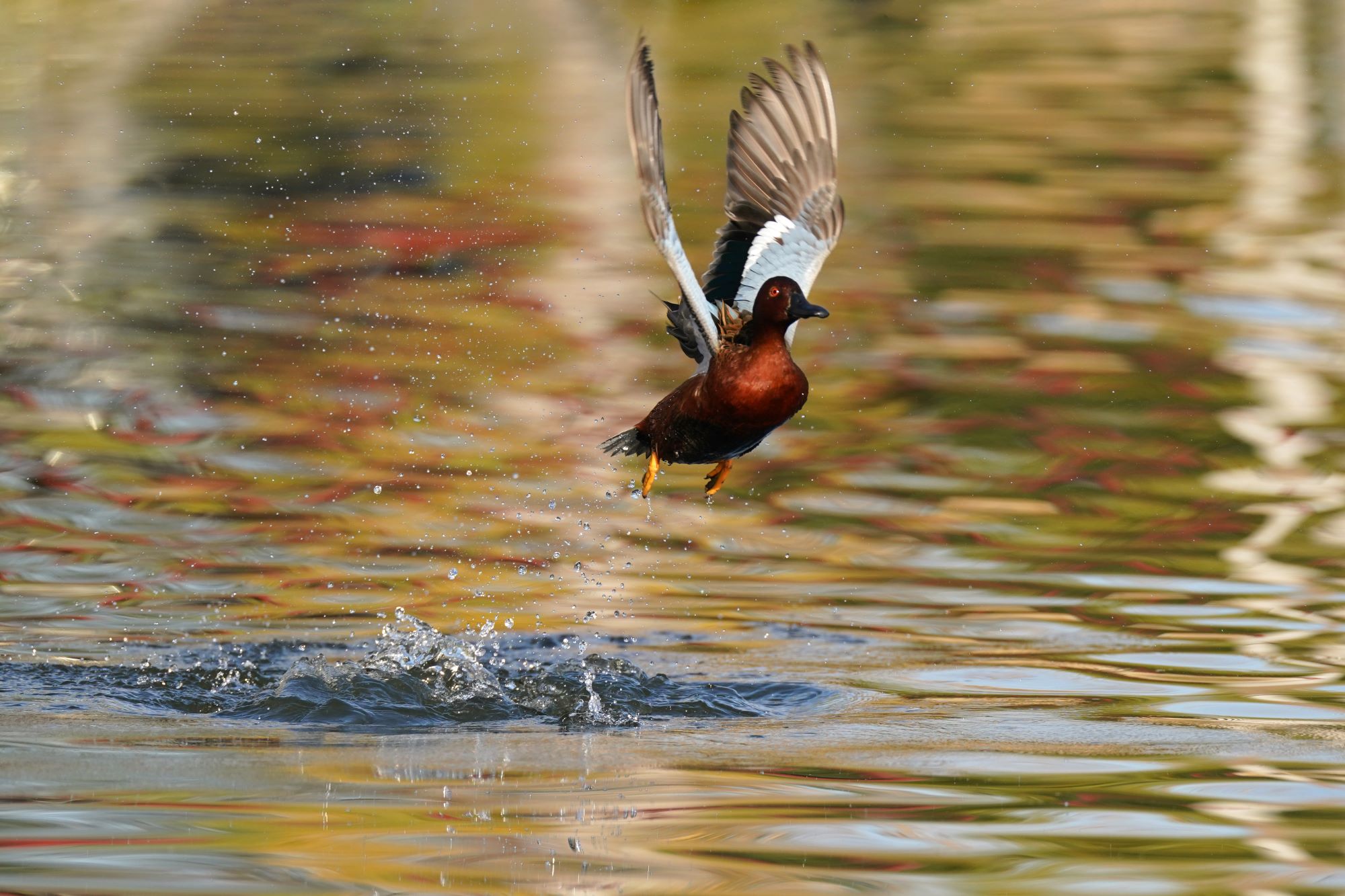
Cinnamon Teals in Utah
Cinnamon Teals, a striking species of dabbling duck, are a common and vibrant presence in Utah's wetlands and waterways. Known scientifically as Spatula cyanoptera, these small ducks are particularly notable for their rich, cinnamon-red plumage seen in males during the breeding season. Females are mottled brown, providing excellent camouflage in the marshes and reed beds where they often reside. In Utah, Cinnamon Teals are primarily found in freshwater marshes, shallow ponds, and along the edges of lakes, where they thrive in habitats with ample aquatic vegetation. These ducks are most active in Utah during the spring and summer months, as they are primarily breeding residents of the state, though some may migrate to warmer regions during winter.
The diet of Cinnamon Teals primarily consists of seeds, aquatic invertebrates, and plant matter, which they forage from the surface of the water or by tipping forward to feed underwater. In Utah's wetlands, these ducks play a crucial role in controlling insect populations and aiding in the dispersal of aquatic plants. Their feeding habits contribute to the health of wetland ecosystems, as they help maintain a balance in the food web. The adaptability of Cinnamon Teals to different types of wetland environments makes them an integral part of the biodiversity in Utah's aquatic habitats.
Breeding is a significant aspect of the Cinnamon Teal's lifecycle in Utah. These ducks are monogamous, with pairs forming each breeding season. The female selects a nesting site, usually in dense vegetation near water, where she builds a nest on the ground. The nest is a simple structure lined with down feathers, and the female typically lays 8 to 12 eggs. She is solely responsible for incubating the eggs, which hatch after about three weeks. The ducklings are precocial, meaning they are relatively mature and mobile shortly after hatching and quickly adapt to life in the water.
Conservation of wetland habitats is vital for the survival of Cinnamon Teals in Utah. These environments are essential for providing food, nesting sites, and shelter for the ducks. However, wetlands are among the most threatened habitats due to human activities such as development and pollution. Efforts to preserve and restore these crucial habitats are key to maintaining healthy populations of Cinnamon Teals and supporting the diversity of other wildlife species that depend on these ecosystems.
For birdwatchers and nature enthusiasts, observing Cinnamon Teals in Utah's wetlands is a rewarding experience. Their vibrant colors, especially the males' striking cinnamon plumage, make them a favorite among birders. Additionally, their unique behaviors, such as the females' diligent nesting and the ducklings' early adaptation to aquatic life, provide fascinating insights into the life of wetland birds. The presence of Cinnamon Teals in Utah's wetlands is not only a sign of ecological health but also a reminder of the importance of preserving these vital natural habitats for the diverse array of species they support.